There’s nothing quite like a mystery for building a sense of curiosity. As part of my preparation for the Scottish Plant Recovery project fieldtrip to Norway in early August I was intrigued by the dearth of information about the pollinators of small cow-wheat (Melampyrum sylvaticum). The account in the Biological Flora of the British Isles (an exhaustive species by species review of the ecological information available for British plants) simply says that the pollinators are likely to be bees. No information is given about what kind of bees. The Biological Flora goes on to say that no insects of any kind have been observed visiting this species in Scotland, despite surveys taking place in ideal weather.
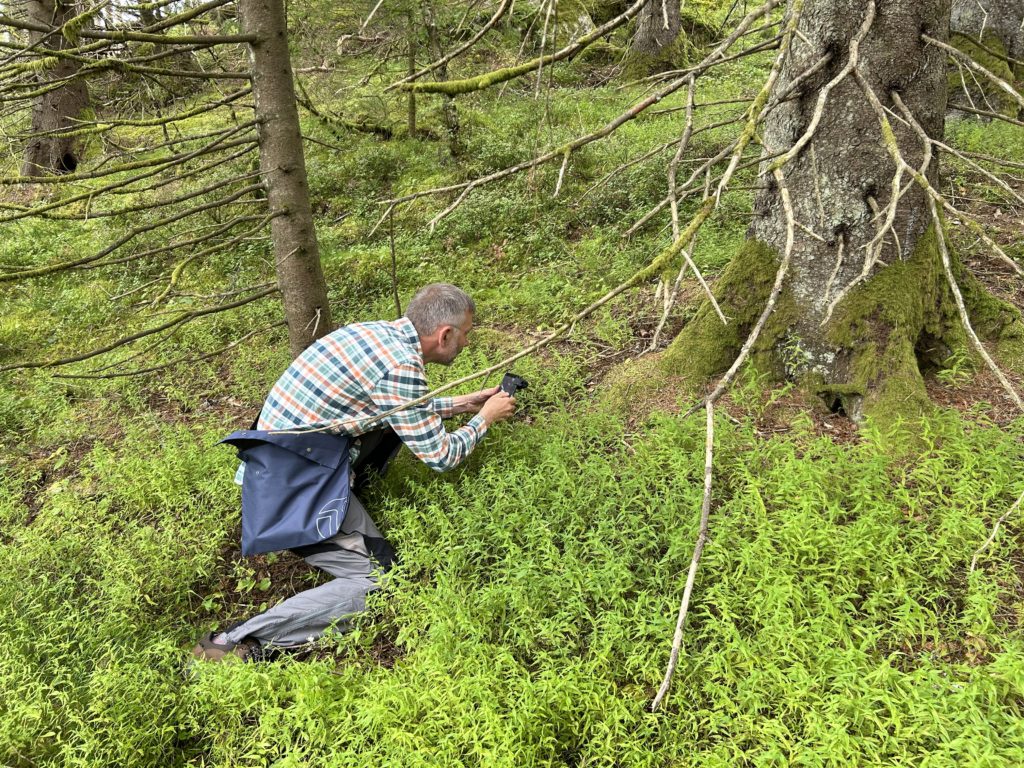
In southwest Norway small cow-wheat is relatively common and widespread as a woodland and woodland edge annual herb that is parasitic on a variety of host plants. The Norwegian plants are growing in a very similar climate to those in Scotland and this makes Norway the ideal place to learn about the plant and its pollinators.
Using online Norwegian biological records the project team has now observed several large populations of small cow-wheat under warm, sunny weather conditions and some new discoveries have been made. This information does not solve the mystery, but we now know a little about what might be important for the successful pollination of this species. Over the course of the Norway fieldtrip I have become ever more curious about cow-wheats and want to find out more. This post shares what we discovered and poses some new questions.
An important point to make is that this plant can self-pollinate. However, the genetic mixing brought about by cross pollination creates new and potentially better adapted combinations of genes. It also tends to prevent the negative consequences of habitual self-pollination. So an understanding of the pollination biology of small cow-wheat will help us to support the recovery of this threatened species in Scotland.
During our first stop on day 1 of the Norwegian fieldtrip, in a woodland beside a road, we found a large population of small cow-wheat extending from the road verge into the woodland. Plants growing in the open verge were almost finished flowering. Thankfully, plants within the shade of the woodland were still in flower. Within minutes of arriving we saw a small striped hoverfly deliberately visiting the flowers and probing with its mouthparts to collect pollen. These insects were quite numerous and were all engaged in the same behaviour. Many species of hoverflies are important pollinators. In the act of visiting flowers to feed on protein-rich pollen they inevitably move pollen from flower to flower.
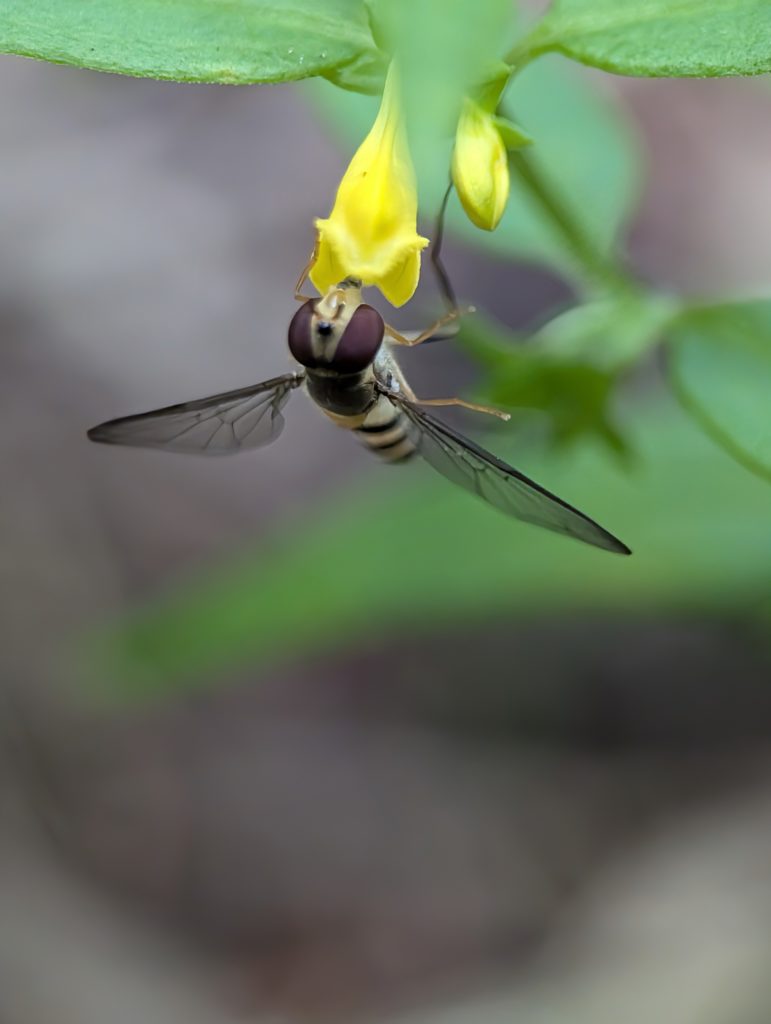
Video and images were taken and with the help of Stephen Hewitt at the National Museum of Scotland we have a tentative identification of the insect as Meliscaeva cinctella. This small hoverfly is widespread in Europe and is even encountered in gardens. It visits a wide variety of flowers in search of pollen. This is an example of what would be called generalist pollination. The pollen is easily accessible at the mouth of the flower and several different hoverfly species that eat pollen could act as effective pollinators of small cow-wheat.
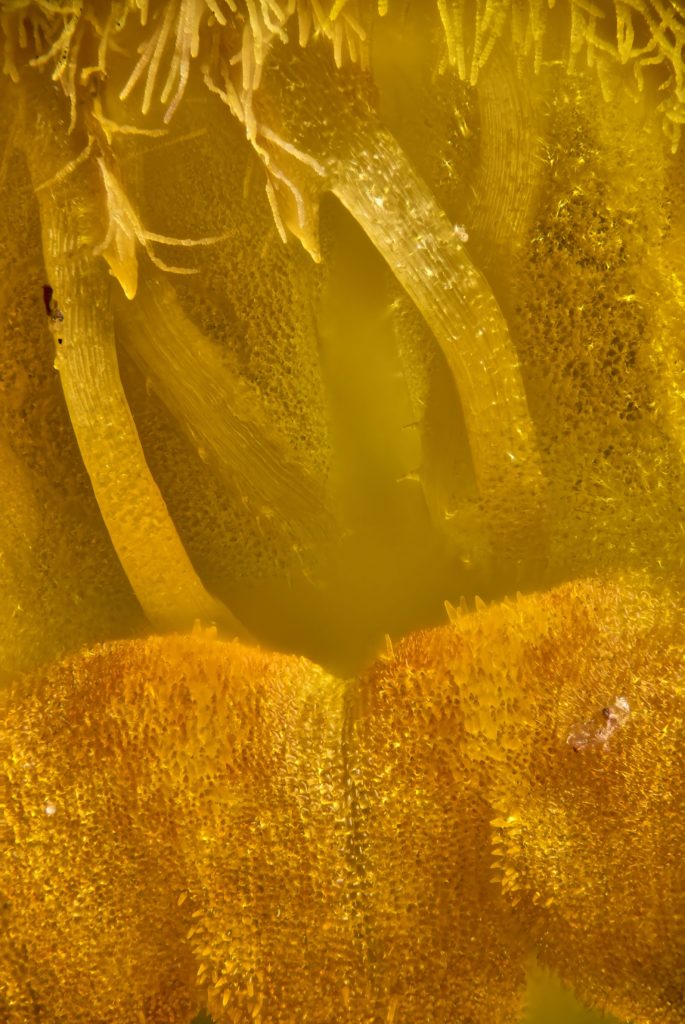
So far so good, but let’s not entirely give up on bees. Remember that the Biological Flora suggested bees as a likely pollinator. This idea is based on the floral structure. The flower is bilaterally symmetrical and tubular and is bright yellow. All of these things suggest a bee with a tongue that is long enough to probe to the base of the tube and reach the sugar-rich nectar.
Over three days of observations at several sites there was no sign of bees visiting small cow-wheat flowers. However, I had wondered if the blaeberry bumblebee (Bombus monticola) might be a potential pollinator of small cow-wheat because it is a species found in the same upland habitats. This bee is also know as the mountain bumblebee and it is easy to identify as the majority of the tail (abdomen) of the bee is red and all other bumblebees that have red tails only have a small portion of red towards the tip of the tail.
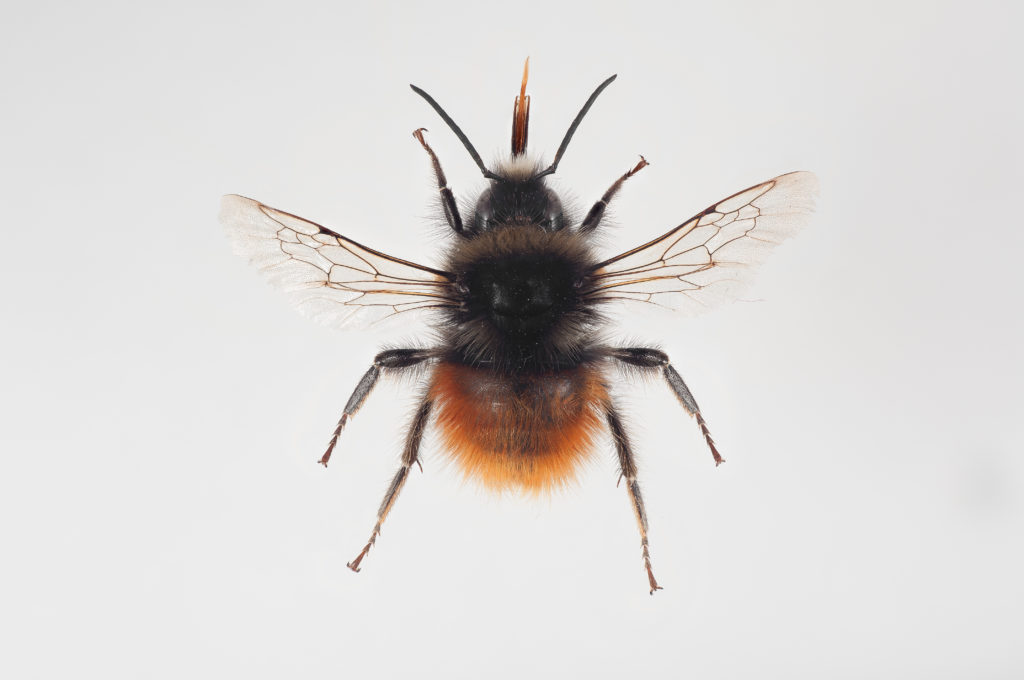
So it was particularly interesting to observe the blaeberry bumblebee visiting flowers of common cow-wheat (Melampyrum pratense) at two different sites during the fieldtrip. Even more intriguing was the behaviour of the bees as they were seen to be engaged in the robbery of nectar and were not providing pollination services to the plant.
But how does all of this relate to small cow-wheat? Common cow-wheat is a different species and the bees in this case don’t appear to be acting as good pollinators. Well, this is where the story becomes somewhat speculative. That’s fine as the curious will always speculate when there are gaps in knowledge.
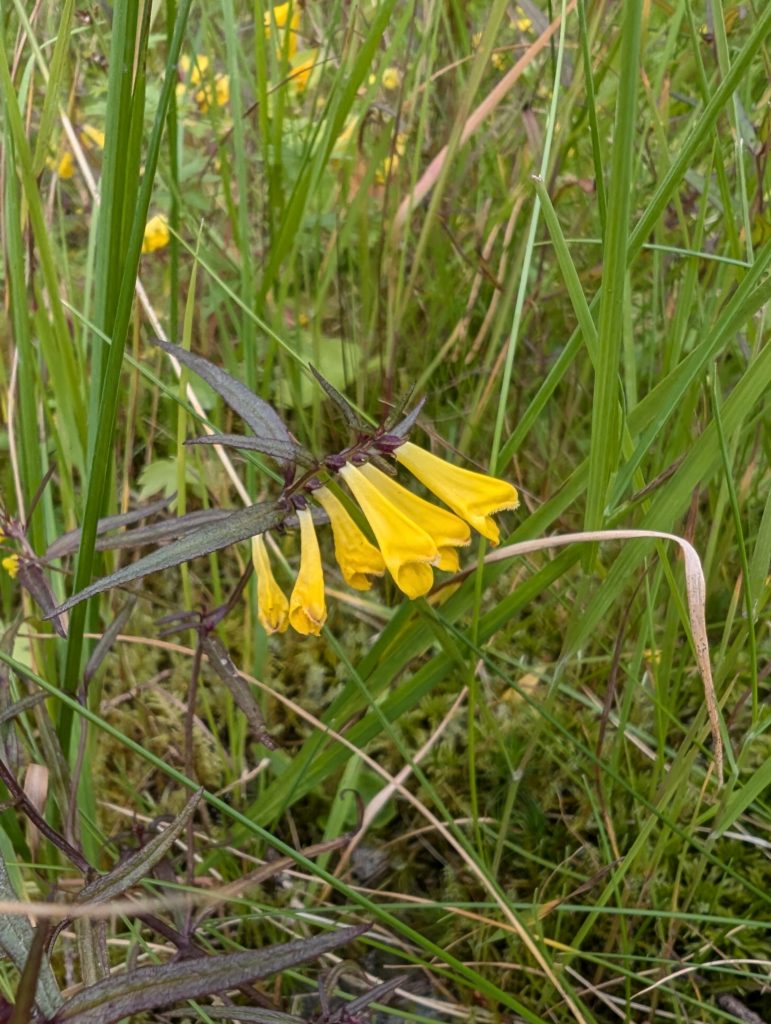
Small cow-wheat and common cow-wheat are rather similar in appearance (something I learnt the hard way), so any pollinator that visits one species could potentially visit the other. This is where the observed ‘nectar robbing’ becomes even more interesting. The blaeberry bumble bees are forced into biting holes at the base of the flowers because their tongues are not long enough to probe to the bottom of the flower. These small holes are repeatedly used by the bees to access the nectar. The bees in Norway were going straight to the holes that had previously been made and were having little or no contact with the open mouth of the flower. Consequently, they were not acting as effective pollinators. Nectar robbing is actually a phenomenon that is not uncommon and can be observed in gardens on a range of flowers carried out by several bee species.
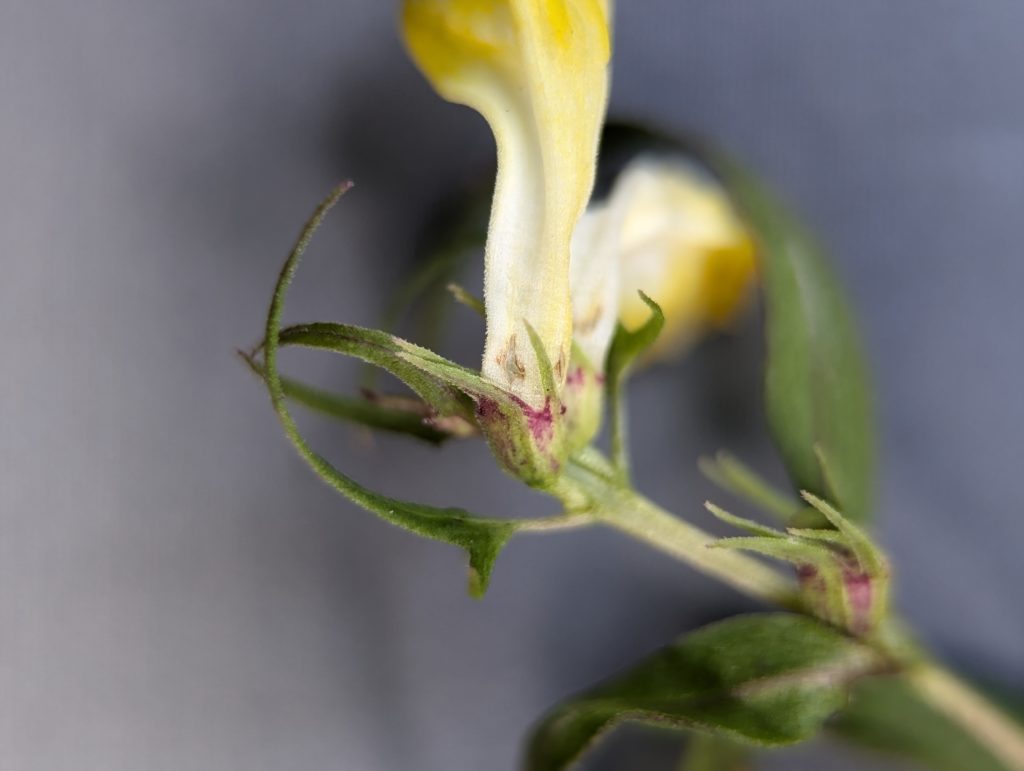
One of the initially subtle differences between the two cow-wheat species is the length of the flower. Small cow-wheat has much shorter flowers. This means the relatively short tongue of the blaeberry bumblebee may actually be long enough to reach the nectar. More observations are needed, but if this was the case (speculation alert) then the bees would not bother to nectar rob as that would be a pointless waste of energy. They would be able to access the nectar in the way that the plant intended and would be performing the important job of cross pollination.
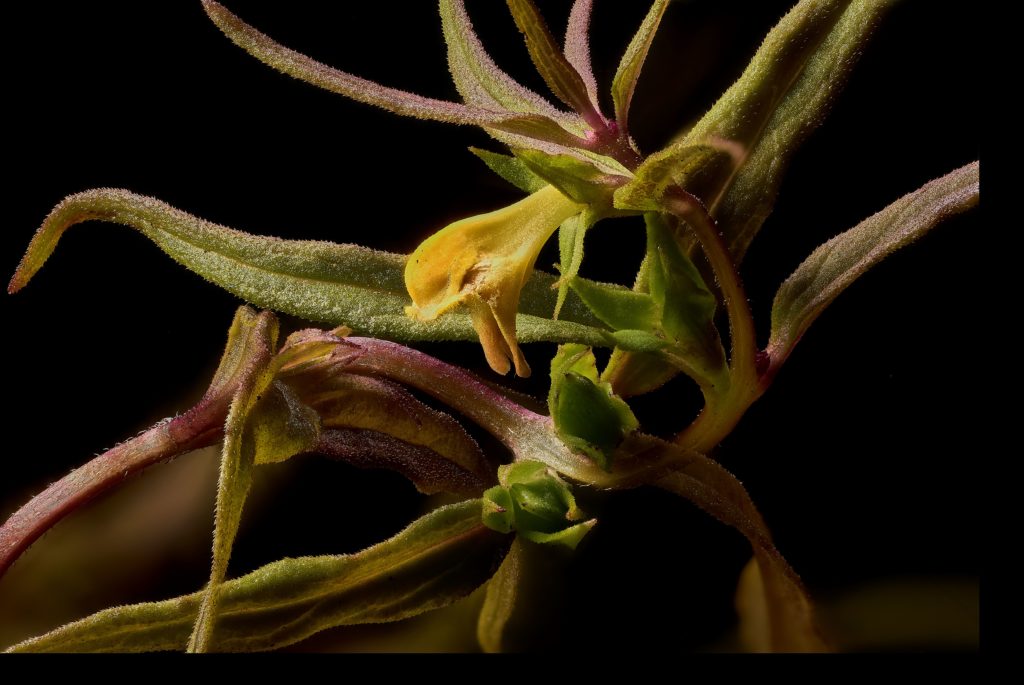
My time in Norway has come to an end, but the rest of the team have a couple more days. Continued observations of pollinators on cow-wheat will be made and particular attention will be paid to looking for evidence of nectar robbing (small holes) on small cow-wheat. Even if blaeberry bumblebee does nectar rob small cow-wheat flowers it probably provides at least some pollination services. The bees visiting common cow-wheat did sometimes probe into the mouth of flowers, presumably for the pollen.
However, if nectar robbing turns out to be unnecessary in small cow-wheat, this pretty little bee could be another important pollinator, alongside the hoverfly we observed, to be taken into account in the recovery of this plant. This is the nature of science – answers simply raise more questions. Our ignorance of cow-wheat pollination is now a little reduced.
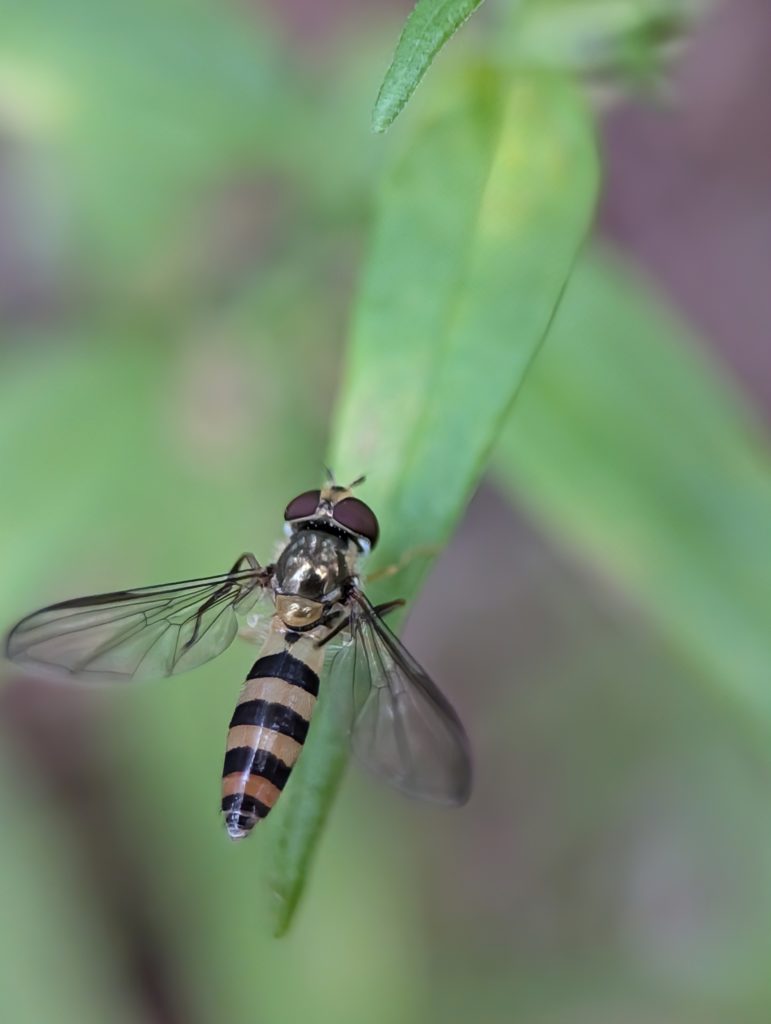


- X @TheBotanics
- X @nature_scot
- X and Facebook @ScotGovNetZero
- Facebook @NatureScot
- #NatureRestorationFund
